Understanding 240 Volts Current, Power, and Applications
Understanding 240 Volt Current Power and Applications
Electricity plays a vital role in our daily lives, and one of the most commonly used power standards in homes and industries is 240 Volt current power. This voltage level is known for delivering more power efficiently, making it suitable for high-demand appliances and industrial applications. Understanding how 240 Volt current power works, its advantages, and its applications can help homeowners, electricians, and engineers make informed decisions.
In this comprehensive guide, we will explore the fundamentals of 240 Volt current power, how it compares to other voltage systems, and where it is most commonly used. We will also discuss safety considerations and the benefits of using 240 Volt current power in both residential and industrial settings.
- What Is 240 Volt Current Power
- Advantages of Using 240 Volt Current Power
- Comparison of 240 Volt Current Power vs. 120 Volt Systems
- Common Applications of 240 Volt Current Power
- Safety Considerations for 240 Volt Current Power
- How to Upgrade to 240 Volt Current Power
What Is 240 Volt Current Power
To fully understand 240 Volt current power, it's important to start with the basics of electrical voltage and power distribution.
Definition of 240 Volt Current Power
240 Volt current power refers to the electrical voltage level commonly used in residential and industrial applications. It is typically supplied through a split-phase system in North America or a single-phase system in other parts of the world. This system allows higher-powered appliances to operate more efficiently compared to standard 120V circuits.
How 240 Volt Current Power Works
In the split-phase system (common in the U.S. and Canada), a transformer provides 240V by combining two 120V legs of alternating current (AC). The two legs are 180 degrees out of phase, creating the full 240V potential difference.
For 120V appliances, only one leg and a neutral wire are used.
For 240V appliances, both legs are used, doubling the voltage while keeping current demand lower.
This system reduces the amperage required, preventing excessive heat buildup and making 240 Volt current power a safer and more efficient choice for heavy-duty applications.
>>See also Safe and Effective Ways to Charge Your Hoverboard
Advantages of Using 240 Volt Current Power
Switching to or utilizing 240 Volt current power comes with several advantages, particularly in efficiency and performance.
1. More Efficient Power Delivery
Higher voltage allows electrical devices to operate with lower current, reducing resistance and energy loss. This improves efficiency and minimizes wasted electricity.
2. Reduced Electrical Wiring Costs
Since 240 Volt current power requires lower current for the same power output, wiring can be thinner compared to lower-voltage systems, leading to cost savings on materials.
3. Better Performance for High-Power Appliances
Appliances such as ovens, dryers, water heaters, and HVAC systems operate more efficiently on 240 Volt current power, as they draw less current and generate less heat.
4. Lower Risk of Overheating and Fire Hazards
Lower current flow results in less heat in electrical wiring, reducing the risk of overheating and potential fire hazards.
5. Compatibility with Industrial Equipment
Many industrial machines and tools are designed to operate on 240 Volt current power, making it the standard for commercial and factory settings.
Comparison of 240 Volt Current Power vs. 120 Volt Systems
To understand the benefits of 240 Volt current power, let's compare it to the more common 120V system used in homes.
|
Feature |
120 Volt System |
240 Volt Current Power |
|
Power Efficiency |
Less efficient, requires more current |
More efficient, requires less current |
|
Common Applications |
Small appliances, lighting, electronics |
Large appliances, industrial tools |
|
Heat Generation |
Higher heat buildup in wires |
Lower heat buildup, safer wiring |
|
Wiring Requirements |
Thicker wires due to higher current |
Thinner wires possible due to lower current |
|
Electrical Cost |
Higher costs due to inefficiency |
Lower energy costs with efficiency |
For high-powered appliances, 240 Volt current power is clearly the better option.
Common Applications of 240 Volt Current Power
240 Volt current power is widely used across multiple industries and residential applications. Below are some of the most common uses.
1. Residential Applications
a. Kitchen Appliances
Many modern kitchen appliances require 240 Volt current power, including:
Electric ovens and stoves
Large microwaves
High-end coffee machines
b. Heating and Cooling Systems
Central air conditioning units
Electric water heaters
Baseboard heaters
c. Laundry Equipment
Clothes dryers
Washing machines with heating elements
2. Industrial and Commercial Uses
a. Heavy Machinery
Factories and workshops use 240 Volt current power for machines like:
Industrial saws and drills
Welding equipment
Conveyor belt motors
b. Agricultural Equipment
Water pumps
Large irrigation systems
Dairy farm machinery
c. Office and Commercial Buildings
Large HVAC systems
Commercial refrigeration
Backup generators
3. Electric Vehicles (EVs)
Most electric vehicle (EV) chargers operate on 240 Volt current power, allowing for faster charging compared to standard 120V outlets.
Safety Considerations for 240 Volt Current Power
While 240 Volt current power is highly efficient, it also requires proper safety precautions to prevent electrical hazards.
1. Proper Grounding
Always ensure 240 Volt current power circuits are properly grounded to avoid electric shocks.
2. Circuit Protection
Use appropriately rated circuit breakers and fuses to prevent overloads.
3. Qualified Installation
Installation of 240 Volt current power circuits should always be performed by a licensed electrician.
4. Regular Maintenance
Regular inspections of wiring, outlets, and appliances help prevent potential hazards.
>>See also How to Convert 2048 Watt Hours to Amp Hours
How to Upgrade to 240 Volt Current Power
If you are considering upgrading from a 120V system to 240 Volt current power, follow these steps:
1. Check Your Electrical Panel
Ensure your home’s electrical panel supports 240 Volt current power. Most modern homes have a split-phase 240V system available.
2. Install a Double-Pole Circuit Breaker
A double-pole breaker is required to deliver 240V by connecting to both 120V hot wires.
3. Upgrade Wiring If Necessary
Consult an electrician to determine if your existing wiring is sufficient for 240 Volt current power.
4. Use Proper Outlets and Plugs
Appliances requiring 240 Volt current power need specialized outlets and plugs.
240 Volt current power is an essential electrical standard for high-power applications in residential, commercial, and industrial settings. By understanding how 240 Volt current power works, its benefits, and its applications, homeowners and businesses can make informed decisions about power usage and efficiency.
From improved energy savings to enhanced safety, the advantages of 240 Volt current power make it a preferred choice for heavy-duty appliances and machinery. Whether you are upgrading your home’s electrical system or setting up an industrial workspace, knowing the fundamentals of 240 Volt current power ensures a reliable and efficient power supply.

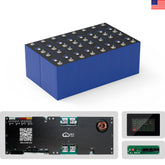

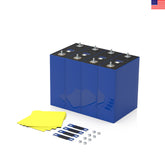
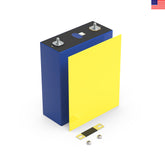
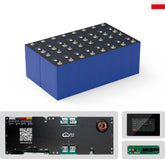

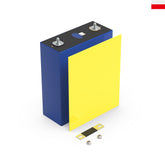

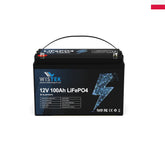
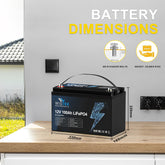



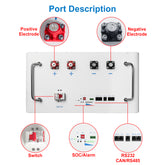
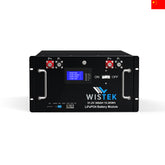
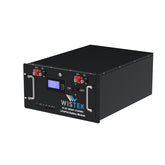


Leave a comment
All blog comments are checked prior to publishing